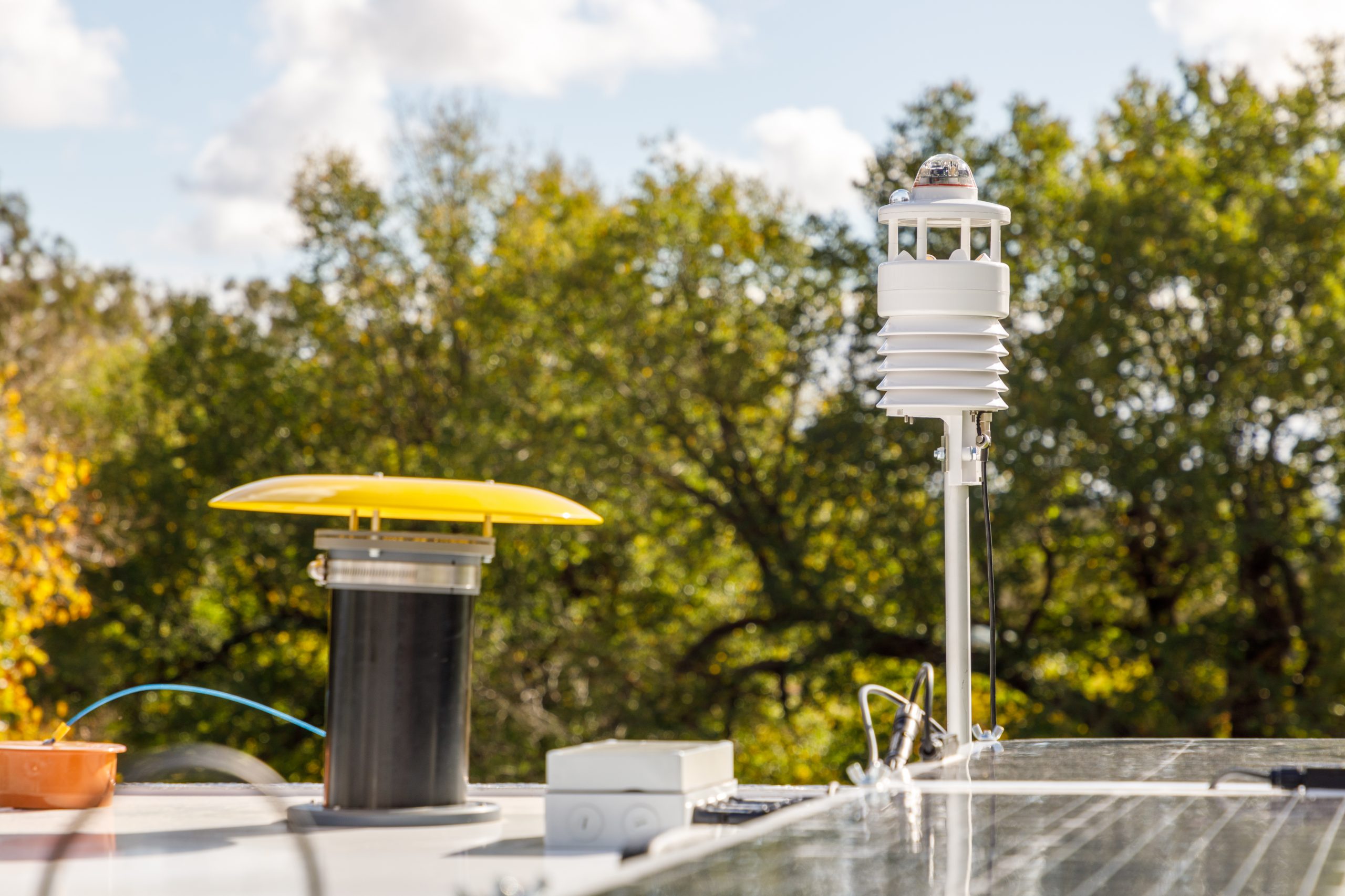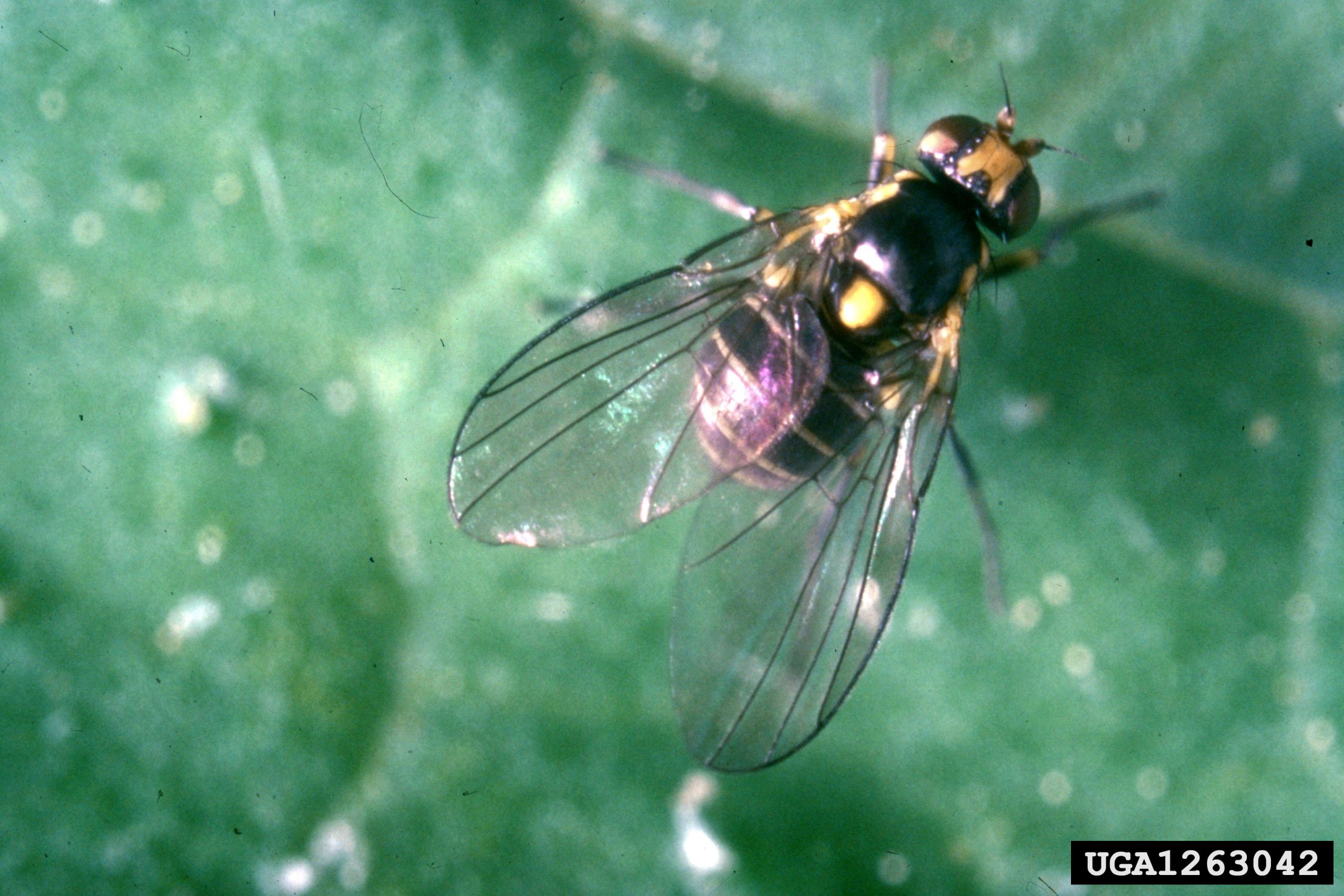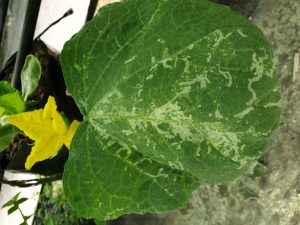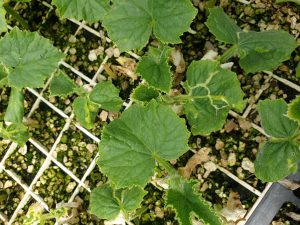
‘Bio-securing’ the Top End’s farming future
22 February 2021
Banding together to achieve national biosecurity goals
22 February 2021The serpentine leafminer (SLM; Liriomyza huidobrensis) is a plant pest from the family Agromyzidae, and has a wide host range of plant species that include broccoli, beet, spinach, peas, beans, chilli, cucumber, potatoes, cut flowers, melons, and a number of weeds. The pest can only fly short distances; however, the eggs, larvae and pupae of SLM can be spread through the movement of plant material and soil or potting mix. AUSVEG Project Officer Madeleine Quirk reports.
In late 2020, there were several confirmed detections of serpentine leafminer (Liriomyza huidobrensis) on field-grown vegetables in western Sydney, and in celery and beans in the Fassifern Valley region of Queensland. Following extensive surveillance and assessments on where the pest was found and commodities affected, it was deemed that SLM was not technically feasible to eradicate. This has seen a transition to management for affected industries.
Identification
Adult serpentine leafminer range from 1.3-2.3 mm in length, with black and yellow markings. Serpentine leafminer can be very difficult to distinguish from native leafminer species and usually requires specialist diagnostics to confirm.
Lifecycle
Serpentine leafminer have an egg, larval, pupal, and adult stage. Female flies lay eggs directly into the leaf, and larvae begin to tunnel through the leaf tissue as they feed. After a number of days, the larvae exit the leaf and pupate in the soil before becoming an adult fly. Under the right conditions, the lifecycle can be completed in as little as two weeks, meaning several generations may be produced within a single crop.
Damage
Serpentine leafminer damage is primarily caused by larvae feeding inside the leaves. Typically, this feeding causes long, narrow, serpentine-shaped ‘mines’ which appear as white or grey lines on leaves.
High levels of infestation affect the plant’s ability to photosynthesise, potentially reducing plant growth and crop yields.
Adult females can also create damage known as stippling when feeding and laying eggs. These are small pale green to white circular spots scattered over the leaf surface. Stippling can increase secondary leaf infections, and can affect marketability of produce, especially for leafy vegetables.
Updates on detections across New South Wales and Queensland
Serpentine leafminer was detected in western Sydney in late October 2020. The New South Wales Department of Primary Industries (NSW DPI), in conjunction with Greater Sydney Local Land Services, launched an emergency response to deal with the outbreak. Serpentine leafminer was detected on a total of 35 properties across five NSW regions. Detections in rural NSW were linked to the main outbreak in the Sydney Basin, and affected properties including vegetable farms, nurseries (both vegetable and ornamental) flower importers, home gardens and weeds on roadside verges.
Vegetable growers were the largest affected group. Thirty-eight plants species from 10 plant families were recorded as hosts, with bean, lettuce, spinach, chillies, and cucurbits particularly affected.
The NSW DPI Climate Change unit is assisting with an assessment of where SLM is likely to spread within NSW, and the NSW DPI Insecticide Resistance unit is exploring if the insects found in the NSW incursion may have resistance to any of the registered chemicals. This is a complex process; however, it is a vital step for future best practice management of SLM.
On 13 November 2020, serpentine leafminer was detected in Kalbar in the Fassifern Valley after an agronomist reported unusual leafminer signs and symptoms. Samples were delivered to the Department of Agriculture and Fisheries, Queensland (DAF QLD) for identification. Those samples were confirmed as serpentine leafminer on 18 November. Surveillance and tracing investigations indicate it is likely that the pest is already established outside the Fassifern Valley. DAF QLD is undertaking tracing work to determine where plant material has been distributed across south-east Queensland.
At the time of writing in January 2021, there have been no further detections of serpentine leafminer in Queensland. Monitoring is continuing in the Fassifern Valley to detect this pest, and to look at what parasitoids are present in the immediate area to help growers make appropriate spray management decisions. Three readily identifiable parasitoids have been found, with others yet to be formally identified.

Serpentine leafminer stippling damage to choy sum. Image courtesy of Shannon Mulholland from NSW DPI.
Climate suitability in Australia
Many horticultural production regions in Australia have favourable climatic conditions for the establishment of exotic leafminers. Serpentine leafminer is known to have higher tolerance to cooler climates than some other exotic leafminers, which indicates that establishment potential may be high across a wider range of the Australian landscape.
Leafminer pest-generic incursion management plan for the Australian vegetable industry (VG06113) was a strategic levy investment under the Hort Innovation Vegetable Fund. It reported that climate is predicted to be favourable for serpentine leafminer establishment in south-east and south-west regions of Australia, and warm regions along the east coast of Australia.
More information can be found in an updated contingency plan for serpentine leafminer, which was developed through the Hort Innovation-funded multi‑industry investment The Research, Development and Extension program for control, eradication and preparednesss of vegetable leafminer (MT16004). The contingency plan will be available on the Hort Innovation website in coming months.
Integrated pest management crucial
Taking an integrated approach to management of serpentine leafminer will be crucial for the effective control of this pest.
The foundations of an integrated pest management approach include:
- Monitoring pest activity – apply your own economic thresholds to delay and reduce sprays to allow parasitoid populations to build.
- Avoiding broad spectrum insecticides – do not target leafminer flies with inappropriate chemicals. Consider soft chemicals when targeting other pests when leafminer activity is high, as they will harm your beneficial insect population.
- Understanding the role of parasitoids – understand the signs of parasitism to determine if visible leaf mining damage is associated with an active leafminer population.
In response to the recent detections, industry and government have prepared management options for growers, including IPM and chemical management options. Visit dpi.nsw.gov.au for further information.
What can you do?
- It can be difficult to distinguish serpentine leafminer from native leafminer species by looking at the insect itself, so visual surveillance should focus on the damage created by the pest.
- Inspect your crops regularly for signs of plant pests and diseases, including unusual leafmining activity.
- Look for leafminer damage on a wide range of crops.
- SLM is still a notifiable pest, so suspect samples of serpentine leafminer infestation should be reported immediately to the Department of Primary Industries or Agriculture by phoning the Exotic Plant Pest Hotline (see information box).
Further resources
For more information, visit the following websites.
dpi.nsw.gov.au.
daf.qld.gov.au.
planthealthaustralia.com.au.
ausveg.com.au/mt16004.
Find out more
For more information, please contact AUSVEG Project Officer Madeleine Quirk on 03 9882 0277 or email madeleine.quirk@ausveg.com.au.
Any unusual plant pest should be reported immediately to the relevant state or territory agriculture agency through the Exotic Plant Pest Hotline (1800 084 881).
Cover image: Serpentine leafminer adult. Image courtesy Central Science Laboratory, Harpenden, British Crown, Bugwood.org.



